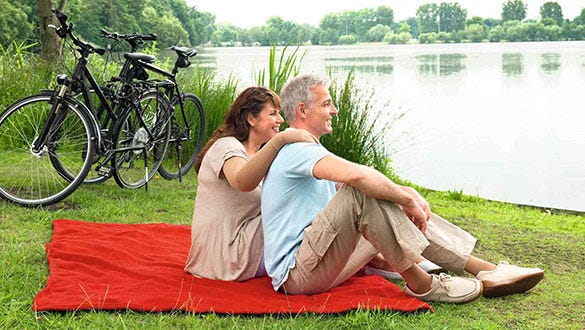- Free First Class Delivery
- Buyer Protection
- Secure Online Shopping
- Healthcare Professional? Click here
Lipoedema


Categories
Lipoedema – hereditary disorder of fatty tissue distribution
Lipoedema is not a fat reservoir resulting from obesity. It is the result of an increased number of fat cells with pathological changes. Since lipoedema occurs almost exclusively in women, experts assume hormonal causes. The few men who develop lipoedema often have liver damage.
Signs and symptoms
One of the signs of lipoedema is to do a Stemmer's test - if you can pinch a skin fold at the base of the toe or a finger then this is a negative Stemmer's sign. In lymphoedema, this is not possible (Stemmer's sign is positive). Other signs of lipoedema are a tendency to develop spider veins, bruises or increased swelling of the calf in the second half of the day. In contrast to lymphoedema, lipoedema is always symmetrical. Lipoedema is painful to pressure and touch. In the advanced stages, even wearing tight clothing is painful. In contrast to lymphoedema, “Stemmer's sign” is always negative in lipoedema.
An overview of the clinical signs of lipoedema:
- Negative Stemmer's sign
- Symmetrical swelling
- Pain on touch and pressure
- Bursting pain
- Often "spider" veins over the outside of the thigh
- Susceptibility to bruising
- Familial history
- Skin is soft, nodular and exhibits typical pitting
- In a few cases, the arms are also affected.




Risk factors and causes
Almost only women and girls are affected by lipoedema. Therefore experts suspect hormonal causes. As a rule, lipoedema begins towards the end of puberty, during a pregnancy or during the menopause. Furthermore, susceptibility to lipoedema appears to be genetic.
Prevention
Sport and a healthy diet help during the early stages of lipoedema. Patients should play sports about three times a week for at least 45 minutes at each session (the body only starts burning fat after 30 minutes). It is essential to wear compression garments during sporting activities. This prevents swelling, because the improved circulation presses more water into the tissues.
There are wide-ranging treatment methods for existing lipoedema.
Tips for everyday living with lipoedema
Lipoedema is a chronic disease. In addition to medical therapy, whatever you do will determine how well you can cope with living with oedema.
Sports
Sports are advisable, but only if you wear your compression garments or bandages. Otherwise, the circumference of your legs would increase further still without compression. The following sports are particularly recommended:
- Power walking
- Walking
- Hiking
- Aerobics
Also recommended are aqua-jogging and swimming, which you can do without compression, because the water pressure acts like compression
Comfortable clothing
Make sure you wear loose clothes and flat, comfortable shoes. Do not wear any tight belts or bras.
A balanced diet
The fat pads seen in lipoedema are not caused by being overweight. This is why they cannot be counteracted by dieting. Nevertheless, losing weight and taking part in sporting activities (with compression) has positive effects. You should avoid putting on weight if possible.
Drugs
Unfortunately lipoedema does not respond to pills or ointments.
Skin care
Hygiene is especially important for patients with oedema. Always clean and care for your skin with pH-neutral care products. Do not use deodorants over oedematous areas.
How is lipoedema treated?
Lipoedema occurs almost exclusively in women. While diets or sports do not bring success, compression therapy achieves good results. It ensures that the oedema does not develop further. So you can be certain that you can do something about your oedema.
Compression garments reduce lipoedema or at least keep it constant. In stage 1, seamless, round knit compression stockings in CCL 2 or CCL 3 can often be used. But experts recommend flat knit compression care in most cases. The stockings should preferably be worn every day, but at least three days a week (during sporting activities as well). Your doctor or clinician will advise you. Patients in stage 2 use flat knit compression garments (seamed). In stage 3, complex physical decongestion therapy is applied similarly to lymphoedema. This starts in phase 1 with manual lymphatic drainage followed by application of compression bandaging. This is, in turn, followed by the maintenance phase and the wearing of compression garments. Here again flat knit models are used. They offer optimum pressure stability because the material is less elastic.
Another form of treatment: liposuction
Another form of treatment is liposuction. Pitting may form in the skin after this procedure. However, this is largely prevented by special compression garments. You should ask your doctor whether liposuction is advisable for you before going ahead.
Summary: if your legs, hips or bottom are growing, don't just think about dieting. Ask your GP (or a phlebologist) whether you may have lipoedema. If you do, follow his treatment recommendations and play sports – but please always with compression. Make sure you eat a healthy, balanced diet. This will keep you fit and on your feet – even with lipoedema.


















